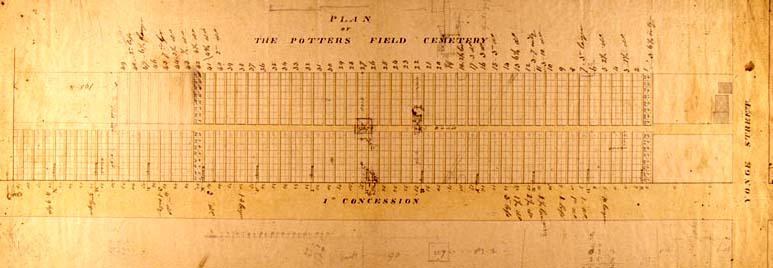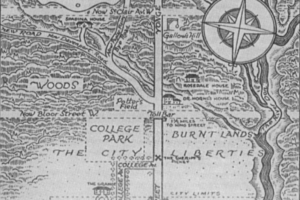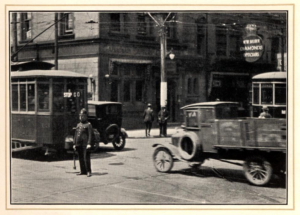Potters Field and the Roots of Mount Pleasant Group

Most Toronto residents are familiar with the Mount Pleasant Cemetery in mid-town. A sprawling oasis in the middle of one of the largest cities in North America, it’s a popular destination for passive recreation, history buffs, wildlife lovers and amateur arborists. But fewer of us know the fascinating origination story of the Mount Pleasant Group, which owns Mount Pleasant and many other cemeteries, funeral centres and cremation centres across the GTA.
In 1825, the City of Toronto did not yet exist. The town of “Muddy” York was the capital of Upper Canada, with a fast-growing population of just over 1,700. (York had more than doubled in size since the War of 1812). Slowly expanding west of the Don River and north of King Street, York had more than 250 houses and almost 50 merchants’ shops. With the growing population came an increase in disease. Many inhabitants suffered from fevers brought about by poor sanitary conditions and the crowded living quarters of the poor. Tuberculosis was a constant threat, as were epidemics of cholera, smallpox and scarlet fever. The town had two burying grounds. One for the Catholics and one for Anglicans. If you weren’t of either faith, you were not welcome to be buried in their cemeteries.

York desperately needed a burial option for those who weren’t associated with the predominant churches of the day. In late 1825, public notices appeared calling “a meeting of the inhabitants of York” at the Masonic Lodge on Colborne Street south of King Street. William Poyntz Patrick was named chairman, and William Lyon Mackenzie was appointed secretary for the meeting, which he reported on in the December 8th issue of the “Colonial Advocate,” the newspaper he had founded the year before. Thomas Carfrae, Jr. who had been asked to find a suitable piece of land for York’s first public burial ground for “all classes and sects,” reported that he had located a six-acre property at what is now the north-west corner of Bloor and Yonge Streets, one mile north of the town limits of York. The property was part of the farm of John Elmsley. Carfrae’s recommendation was approved by the meeting and Messrs. Patrick, Carfrae and Mackenzie were asked to draft a petition to the two members of the Legislature representing York, “praying for an act of incorporation” for the public burying place. The petitions were successful, and an Act of Incorporation was passed on January 30th, 1826. The cost for the burial ground was $300 which was raised through public subscription, with no one person permitted to give more than one dollar. Five men were appointed Trustees of the York General Burying Grounds: Thomas Carfrae, Jr.; Peter Paterson; John Ewart; Thomas Helliwell; and, Dr. Thomas D. Morrison. Unfortunately for the Trustees, their work wasn’t over.

Following incorporation in 1834, the City of Toronto grew rapidly northwards and in no time at all, the cemetery was outside the required one mile beyond the city limits. In 1849, the Trustees once again petitioned parliament, this time to allow them to purchase new land in the township of York. They repeated the petition two years later and were able to buy up to 25 acres of land in York township. In the meantime, the town of Yorkville came into existence north of Toronto, and the residents objected to the nearby Potters Field. In 1855, they were successful in petitioning the government to close the cemetery. The Trustees were empowered to sell the land as soon as all the remains had been removed, and re-buried. Most of the remains were removed by friends and relatives, with the Trustees providing equivalent burial space elsewhere. Those remains that hadn’t been claimed by 1875 were removed by the Trustees, and Potters Field was finally closed. Of those remaining, 984 were re-buried in the Necropolis, which the Trustees had bought in 1855. The remaining 364 bodies were moved to the new Mount Pleasant Cemetery. Both of these properties were the requisite one mile beyond the city limits.